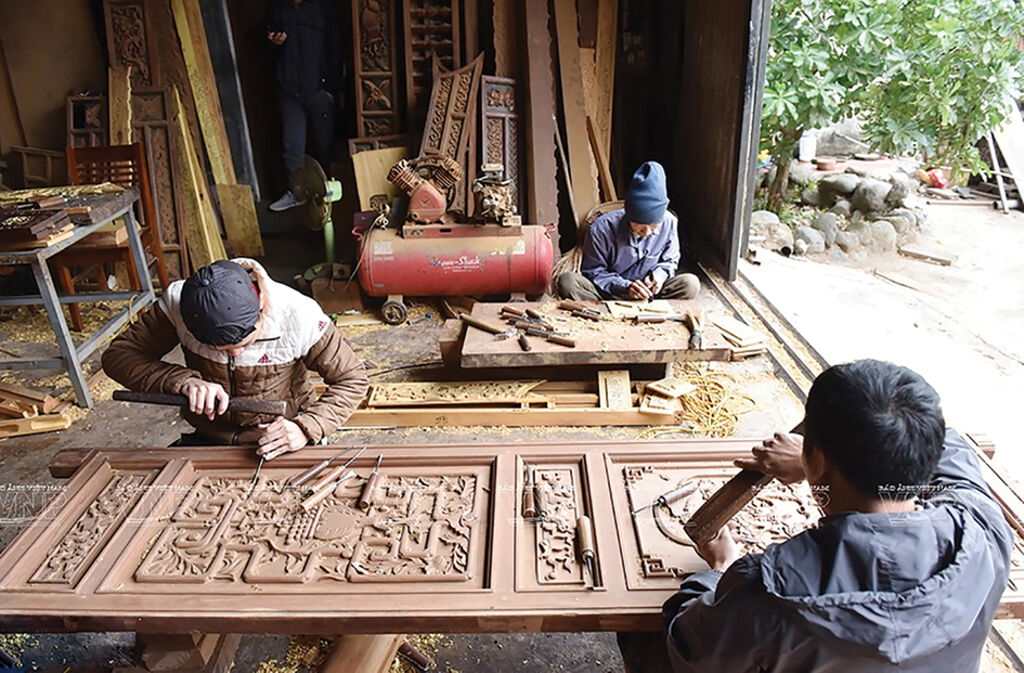 |
| Carving patterns on wood gates__Photo: Tran Thanh Giang/VNP/VNA |
Chang Son village in Thach That district on the outskirts of Hanoi, used to be called Nua Chang and Chang Thon, is one of the age-old villages famous for hand-engraved wooden furniture and wooden joining techniques.
Nobody knows exactly when carpentry craft started in the village but the sounds of chiseling, sawing and sanding have become familiar with villagers for generations. Even the name of the village also reflects its close bonds with carpentry craft. The word “Chang” in Chang Son comes from chang chay, the name of a special chisel which has been used by generations of Chang Son carpenters to carve pattern layouts on wood like painters use pencils to sketch on papers.
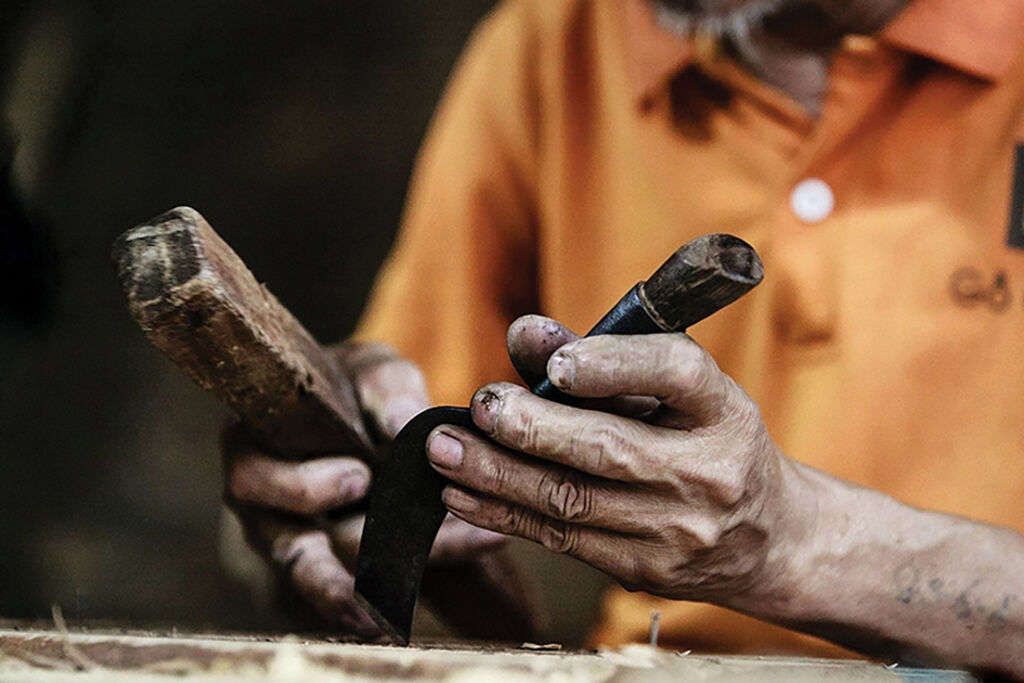 |
| Chang chay - a unique chisel used by Chang Son carpenters__Photo: https://www.qdnd.vn |
Legend has it that Chang carpentry village dates back to the time when the Hung Kings founded the nation. The village’s reputation was so good that Saint Tan Vien - the son-in-law of the 18th Hung King - personally went down the mountain to invite Master Pho Ca San and six other woodworkers to repair his worshipping house. Chang village’s carpentry craft was referred to in the “Du dia chi” (Geography Book) written by UNESCO World Cultural Celebrity Nguyen Trai in the mid-15th century. The story about Master Pho Ca San was also mentioned in the famous literary work “Vang bong mot thoi” (Echoes of a bygone era) of renowned writer Nguyen Tuan which was published in 1940.
As the years passed, generations of the Chang Son village strived to preserve their age-old craft. It is no exaggeration to say that Chang Son children are able to use wood chisels before they can hold pens.
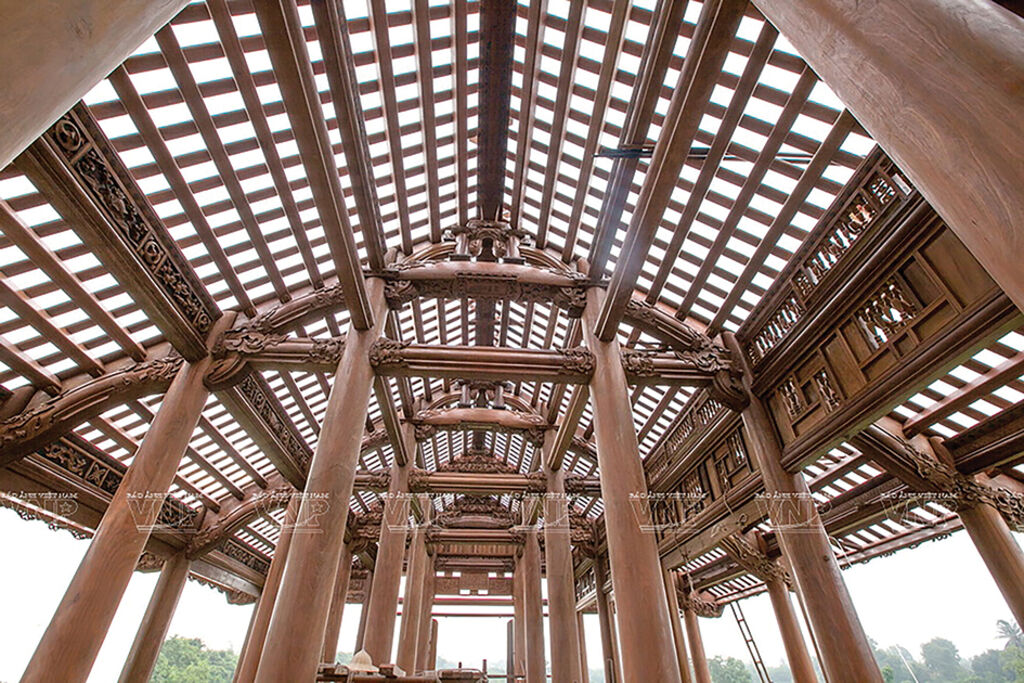 |
| A wooden house frame connected totally by mortise-and-tenon joints__Photo: VNP/VNA |
Making an engraved wooden product without machines is a sophisticated time-consuming process. It comprises various steps from timber selection, design drawing, sawing, cutting, sanding, mortising, joining, chiseling, polishing and coloring. Chang Son experienced carpenters can identify the type and age of timber simply through its aroma. The selected timber must have beautiful grain with small veins and be termite-resistant and less likely to warp. The final outcome will be determined by the quality of timber and the dexterity and creativity of the craftsman.
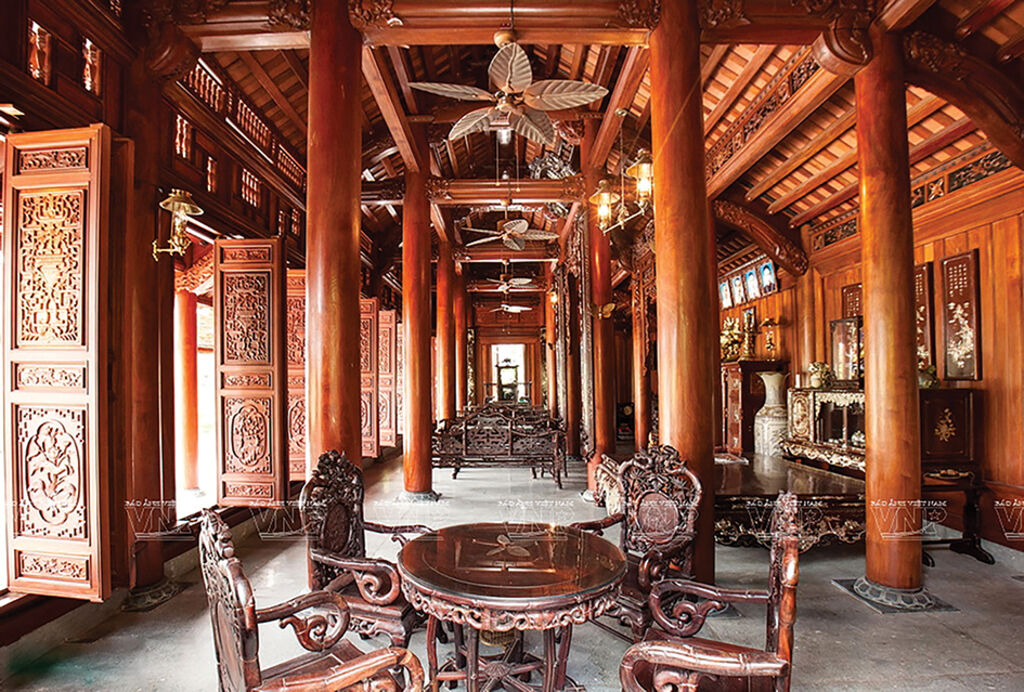 |
| A traditional wooden house built by Chang Son carpenters in Cu Chi district, Ho Chi Minh City__Photo: VNP/VNA |
It can be said that engraving is the most difficult step to breathe life into lifeless blocks of timber. It usually takes a woodworker three years to be proficient in using chisels of assorted types and even a decade to master the skill of chiseling and engraving complex patterns like the four sacred mythical creatures - the dragon, unicorn, tortoise and phoenix, four noble trees - pine, chrysanthemum, bamboo and apricot, and images depicting folk games, etc. But Chang Son carpenters’ reputation comes from not only the art of hand engraving but also the technique of making mortise-and-tenon joints to connect pieces of wood together without glue, nails or screws, even for large-sized items like furniture and frame-houses.
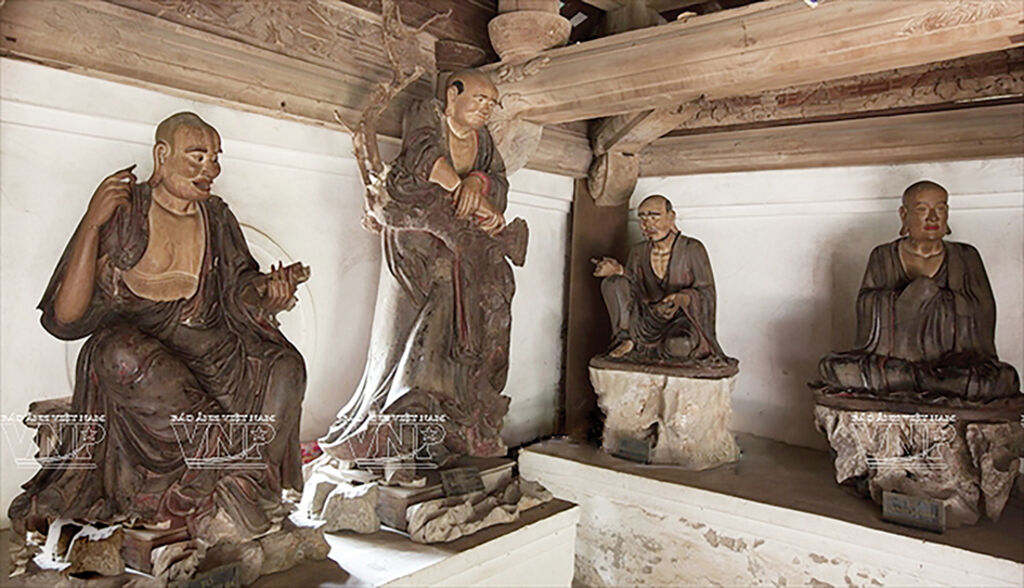 |
| Statues of Arhats displayed in Tay Phuong pagoda, Hanoi__Photo: VNP/VNA |
Chang Son village’s products are diverse, ranging from wooden houses and furniture items to art works. One of the most outstanding artworks of Chang Son craftsmen is a set of statues of the 18 Arhats and the Buddha statue currently displayed at Tay Phuong Pagoda - a special national relic on the outskirts of Hanoi.
Chang Son was recognized as a typical traditional craft village of Vietnam in 2008. Hopefully, the village and its traditional carpentry will be well preserved and further developed.-









